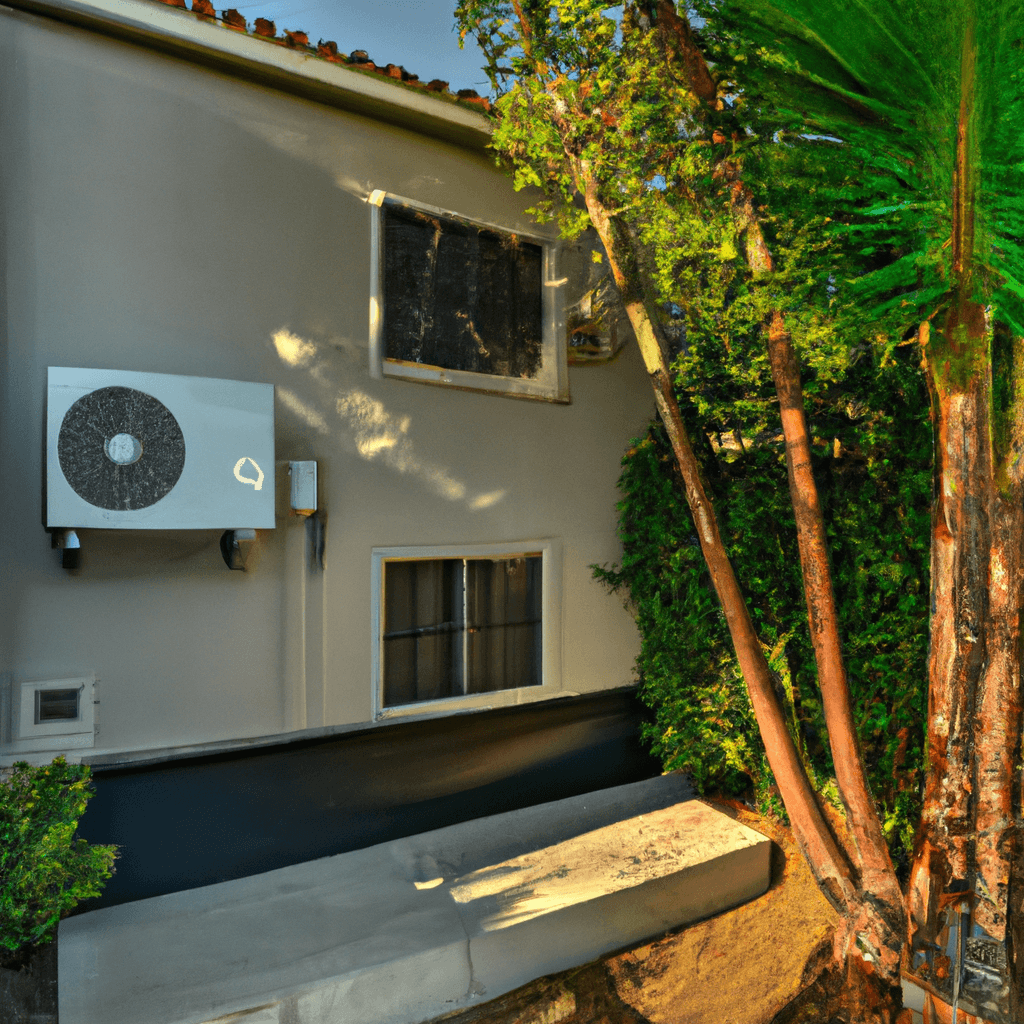SEER vs EER: Exploring the Differences Between These Two Energy Ratings
Whether you’re in the market for a new AC unit, considering replacing your existing heating and cooling system, or just trying to understand what all the different energy ratings mean, it’s important to understand the differences between SEER and EER. SEER, which stands for Seasonal Energy Efficiency Ratio, and EER, which stands for Energy Efficiency Ratio, are two of the most important ratings when it comes to determining the energy efficiency of a particular product.
SEER: An Overview
The SEER rating refers to the annual energy efficiency rate of the air conditioner or heat pump. It’s derived by the ratio of the cooling output of the unit during a typical cooling season, compared to the energy input of the same unit during the same season. For example, if the cooling output of a 4-ton AC unit is 30,650 BTUs during a summer season, and the unit’s electric input was 14.48 kilowatts, the SEER rating would be 2.12.
Typically, the higher the SEER number, the more energy efficient the unit is. Most new air conditioners and heat pumps come with ratings of at least 18 SEER, with advanced designs that can reach 24 SEER.
EER: An Overview
The EER rating measures the amount of cooling output (in BTUs) divided by the amount of electrical input (in watts) to generate the cooling effect. In other words, the EER rating measures the energy efficiency of the unit during peak conditions-like when the outdoor temperature is 95 degrees.
The EER rating of an air conditioner or heat pump can range from 8 to over 15. The higher the rating, the more efficient the unit and the lower the energy costs.
The Bottom Line
When considering the energy efficiency of an AC unit, it’s important to understand the differences between SEER and EER. While both ratings measure the unit’s energy efficiency, each one has distinct advantages and uses.
If you’re looking to purchase a more efficient model, make sure to compare SEER and EER ratings, as well as other factors such as noise level, installation costs, and more. Additionally, it’s important to consider the climate your unit will be exposed to: hotter, more humid climates may benefit from a higher SEER rating, while dry climates may benefit from a higher EER rating.
For more information and advice on how to choose the right AC unit for your home or business, call Local Reliable Appliance Repair at (866) 311-8590. Our experienced and certified technicians can answer all of your questions and provide recommendations that are tailored to your specific needs and budget.



SEER vs EER: Prevention Tips to Avoid Issues
Manufacturers and technicians involved with the installation of heating, ventilation and air conditioning (HVAC) systems recommend a few steps to take to avoid issues when selecting or installing an air conditioning unit. In this article, we will discuss preventive measures for selecting a system based on the Seasonal Energy Efficiency Ratio (SEER) and the Energy Efficiency Ratio (EER).
Local Technician Recommendations
When choosing an air conditioning unit, it is important to consult with a local HVAC technician. They can help provide advice on the size and type of unit to purchase in order to ensure adequate cooling while using minimal energy. It is important to select a unit with a SEER rating no lower than 14, as the higher the rating, the better the energy efficiency of the unit.
There are also certain states that require air conditioning units to have a minimum SEER rating of 13 or higher. Furthermore, the EER rating of an AC unit is important as it measures the energy efficiency of the unit when running under full load. Generally, the higher the EER rating, the more energy efficient the unit will be.
Manufacturer Recommendations
When purchasing an air conditioning unit, manufacturers typically offer installation instructions and advice on how to maintain the system. Thus, it is important to review the manufacturer’s instructions for installation, proper operation and preventive maintenance to ensure the system is installed correctly.
Furthermore, it is important to consider the size of the unit in relation to the space the AC unit will be servicing. If the unit is too small, it will be inefficient and misused. On the other hand, if the unit is too large, it can lead to moisture build up, mold, and allergen problems.
Best Practices for SEER vs EER
In order to select the best air conditioning unit that meets SEER and EER requirements, it is helpful to consider the following best practices:
- Consult with a local HVAC technician prior to purchasing an AC unit to get advice on size and the SEER and EER ratings needed to meet energy efficiency requirements.
- Check the manufacturer’s installation instructions to ensure the unit is installed correctly.
- Select a unit size that is appropriate for the space to be serviced.
- Ensure the SEER rating of the unit is no lower than 14 and the EER rating is above the stated minimum in the state.
- Have the unit professionally serviced at least once a year in order to ensure the unit is running efficiently.
By following these best practices, you can help ensure that the air conditioning unit is properly installed and running optimally in order to maintain a comfortable temperature in the home or office. If you require any technical or installation assistance with your AC unit, it is best to contact a qualified local technician for advice.
Average Repair Cost for SEER vs EER Issue
Call Local Reliable Air Conditioning & Heating for the best repair and installation services in California.
Repairing SEER versus EER issues can be expensive, with even basic repairs and installation costs rising 20% due to supply and demand.
When considering the necessary parts and materials to repair or install SEER and EER systems, you should create an itemized list. This list could include motors, capacitors, contactors, wiring harnesses, condensers, interior cooling units, thermostats, and other objects.
Typically, the minimum repair or installation cost will depend on the complexity of the problem. In general, simple repairs such as replacing a part or reprogramming a thermostat will set you back less than $1,000. On the other hand, complex repairs and installations can cost up to $4,000 and beyond, depending on the materials and size of the system.
In addition, keep in mind that the repair cost may include materials. If so, make sure to ask your contractor for an estimate of the associated costs before starting a project.
Overall, understand that the cost of repairs or installations for SEER versus EER systems can be expensive, but when done properly you can trust them to last for many years. To be sure, contact a trusted and certified contractor that specializes in these types of repairs.
The Advantages of SEER vs EER for Reliable Air Conditioning & Heating
Reliable Air Conditioning & Heating is a family-owned California vendor company with highly trained technicians and a minimum of 5 years experience. They specialize in SEER and EER, offering fair and affordable pricing. Additionally, Reliable is licensend and insured, providing same-day services with a 90 day warranty on all repairs.
SEER and EER, or Seasonal Energy Efficiency Ratio and Energy Efficiency Ratio, are two different measurements of air conditioning units’ efficiency. SEER evaluates and measures a unit’s cooling output over an entire cooling season, while EER measures single-point performance at a given external and indoor temperature.
SEERs generally range between 10 and 19, but can sometimes reach up to 24. Units with higher SEERs carry a higher cost upfront but are cheaper to operate in the long run. EERs measure the efficiency of a single operating point and will usually range between 8 and 12, with higher values indicating higher efficiency.
Reliable’s experienced technicians are well-versed in the differences between SEER and EER, and can expertly guide customers through selecting the best unit for their budget and needs. Reliable’s fair and affordable pricing, same-day services, and 90-day warranty make it a leader in the industry for SEER and EER.
No matter the size of the job, Reliable Air Conditioning & Heating is the best solution for efficient and cost-effective repair, installation, or replacement of an A/C unit. With their expertise and knowledge of SEER and EER, Reliable is a trusted partner in comfort and efficiency.
FAQ: SEER vs EER
What is SEER?
SEER stands for Seasonal Energy Efficiency Ratio. It reflects the ratio of cooling output of a device over a typical cooling season divided by the total energy input during the same period.
What is EER?
EER stands for Energy Efficiency Ratio. It determines the ratio of cooling output of a device over a typical cooling season and the total energy input during the same period.
How Are SEER and EER Different?
SEER measures the device’s efficiency over a typical cooling season while EER measures the device’s output over shorter period of time. Additionally, SEER also takes into consideration the temperature difference in calculation, further enhancing accuracy of the measurement.
What Are Average SEER and EER?
The average SEER value for modern devices is 14, while EER ranges from 8.6-10.6, depending on the type of device.
What Is the Difference Between SEER and EER for Everyday Use?
Both SEER and EER are highly important for users in determining the efficiency and quality of the device. SEER is especially important when used over a longer period of time, as it more accurately reflects how much energy the device consumes. However, EER is better suited for comparison between different types of devices, being able to easily show which appliance consumes less energy.
If you need help determining the right device to buy and/or comparing different models, feel free to contact Local Reliable Appliance Repair at (866) 311-8590.

